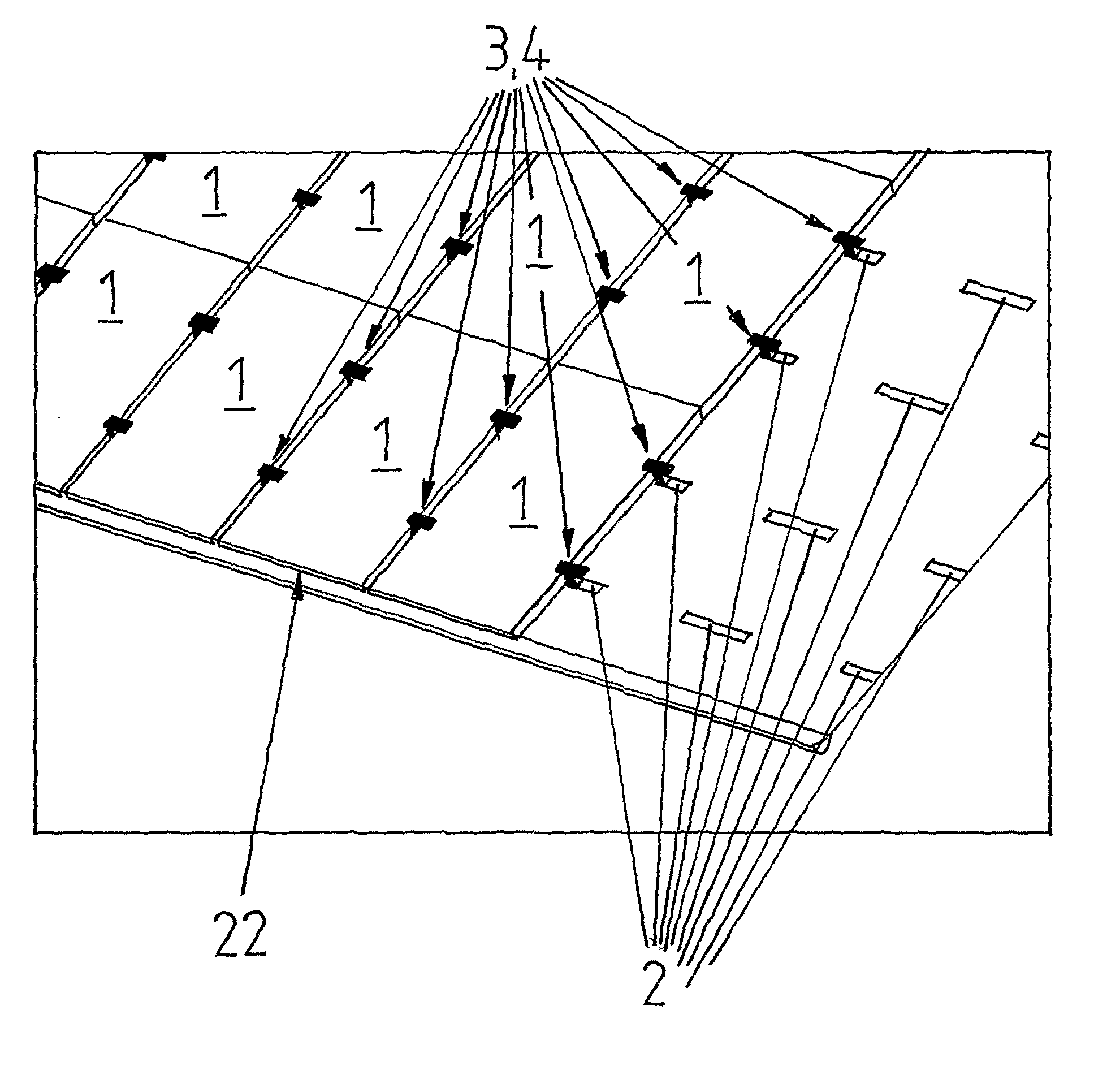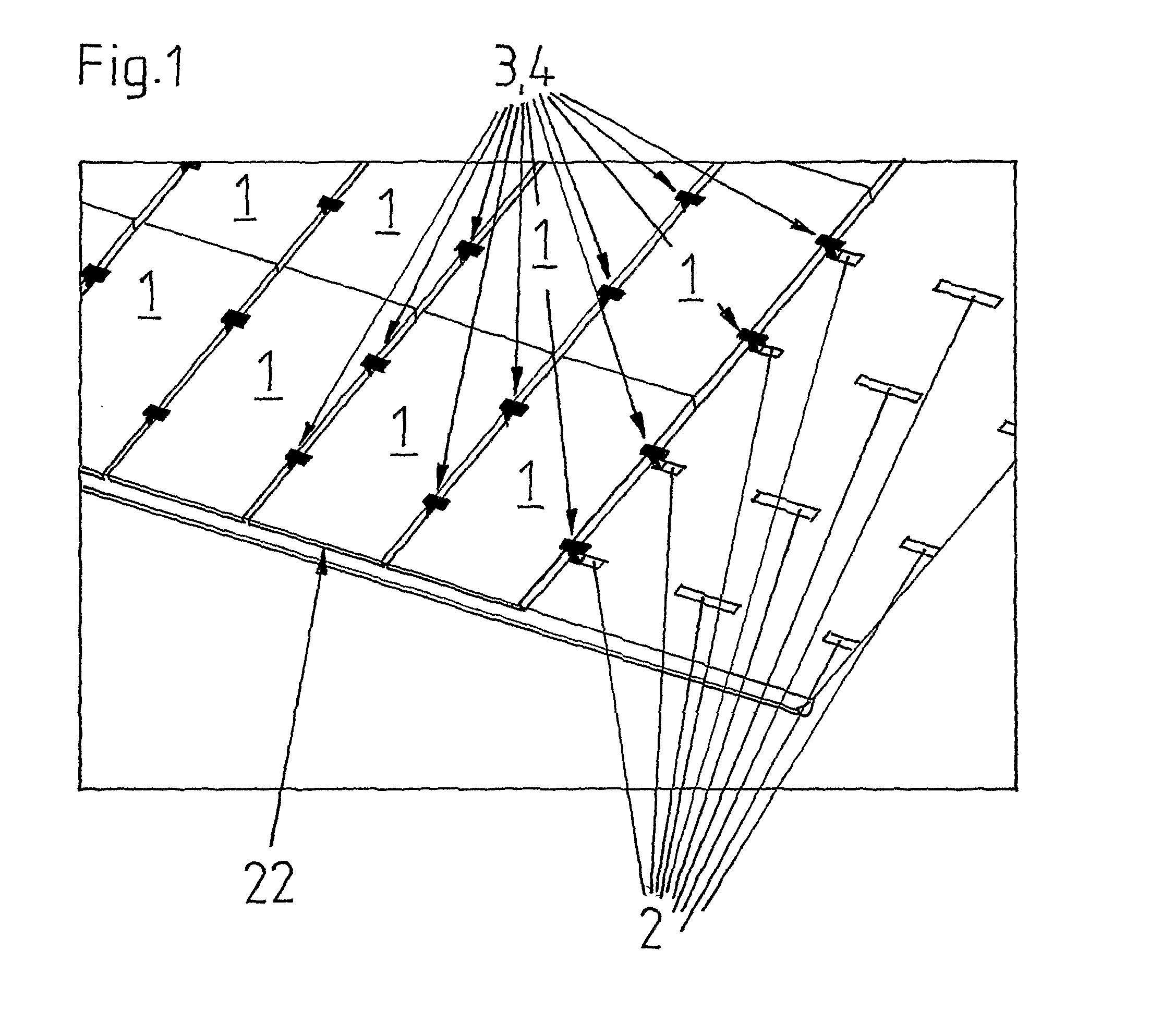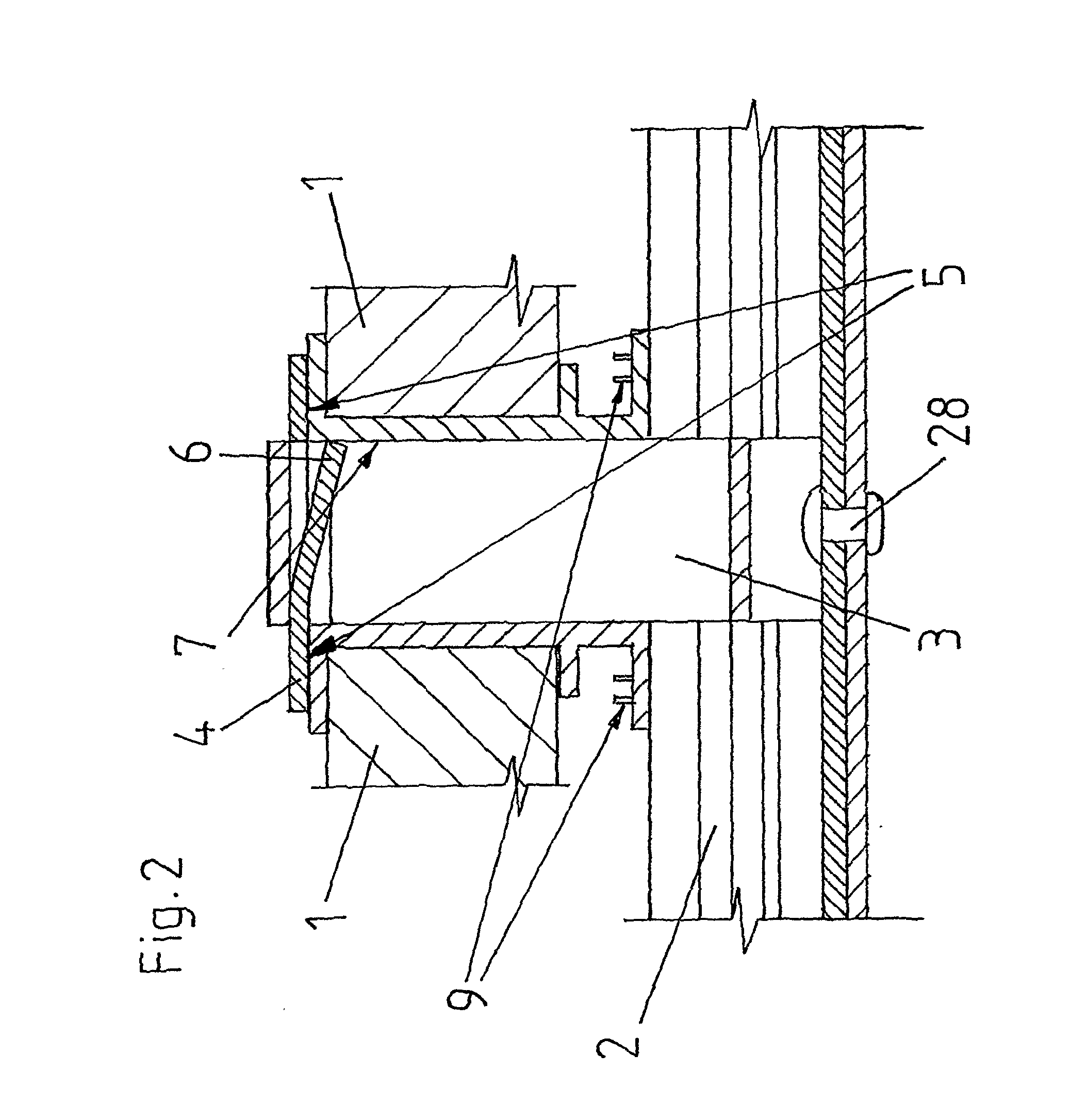Assembly for Fastening a Plurality of Solar Modules to a Building Roof or a Building Facade and Clip for Forming a Stop Element on a Surface
- Summary
- Abstract
- Description
- Claims
- Application Information
AI Technical Summary
Benefits of technology
Problems solved by technology
Method used
Image
Examples
first embodiment
[0107]FIGS. 11 to 13 show a first embodiment according to the invention of a clip 9, as it is used in the assemblies of FIGS. 3 and 7, once in a side view (FIG. 11), once in a top view (FIG. 12) and once in another intended assembly situation than in FIGS. 3 and 7 (FIG. 13).
[0108]As one can see in FIG. 13, the clip 9 is suitable for forming a stop element on an outer surface 11 of an even, thin-walled, plate-shaped component 10 by attaching the clip in an opening 13, which is particularly round, rectangular or in the shape of an elongated hole, arranged in this outer surface 11, protruding through the component 10 and ending in a second outer surface 18 of the component 10, which is substantially parallel to the first outer surface 11.
[0109]The clip 9 is formed in one piece out of a punched part of stainless steel with uniform material strength and has two arm sections 15a, 15b which are connected to each other in a springy way by a spring section 14, their free ends being spaced re...
third embodiment
[0120]FIGS. 19 and 20 show a clip 9 according to the invention, once in a side view (FIG. 19) and once in a top view (FIG. 20). This clip 9 differs from the clip shown in FIGS. 11 to 13 substantially in that it has embossments 29 protruding towards the outside in the areas where it is typically gripped between forefinger and thumb for the installation or the disassembly respectively, by this increasing its grip. Additionally, this area is placed deeper here than the one in the assembly of FIGS. 11 to 13, such that the handling of the clip 9 during the installation and assembly is further enhanced because in the intended installed state this area of the clip 9 protrudes from the surface 11 of the component, on which it forms an abutment. A further difference to the clip shown in FIGS. 11 to 13 consists in that here the arm sections 15a, 15b have each on their upper side a cavity 30 such that they each form two separate contact surfaces 16. By this cavity 30, the upper side of the pun...
PUM
| Property | Measurement | Unit |
|---|---|---|
| Thickness | aaaaa | aaaaa |
| Force | aaaaa | aaaaa |
| Angle | aaaaa | aaaaa |
Abstract
Description
Claims
Application Information
 Login to View More
Login to View More - R&D
- Intellectual Property
- Life Sciences
- Materials
- Tech Scout
- Unparalleled Data Quality
- Higher Quality Content
- 60% Fewer Hallucinations
Browse by: Latest US Patents, China's latest patents, Technical Efficacy Thesaurus, Application Domain, Technology Topic, Popular Technical Reports.
© 2025 PatSnap. All rights reserved.Legal|Privacy policy|Modern Slavery Act Transparency Statement|Sitemap|About US| Contact US: help@patsnap.com



